|
Genres, Themes, Actors, and Directors:
- Cross-Class Romance
- Gene Kelly Films
- Heiresses
- Marital Problems
- Musicals
- Romantic Comedy
- Veterans
Review:
You know a cinematic love story is doomed when the female lead you’re supposed to be rooting for — the one who will undoubtedly Win The Guy in the end — is far less appealing than her would-be rival; unfortunately, such is the case in this disappointing romantic comedy by writer-director Gregory La Cava, starring Marie “The Body” McDonald and Gene Kelly (in his second and last b&w musical) as “Mr. Gogarty”. Indeed, La Cava’s script is severely compromised by the fact that McDonald’s spoiled heiress (Margo) really isn’t worth fighting for — thus leading viewers to question Gogarty’s underlying motives for refusing to give her a divorce. Gogarty’s ostensible rationale — that one shouldn’t give up on one’s commitments (after all, he asks, would we have won The War if we’d given up after the first battle?) — is never fully convincing; despite the wisdom dispensed by Jean Adair (playing Margo’s “wise grandmother”) that men aren’t savvy enough to marry for money, we can’t help but wonder. Meanwhile, Gogarty’s insistence that he “can’t help loving Margo” simply never rings true, given that their romance rests exclusively on paper-thin wartime memories.
La Cava does manage to slide some nifty sexual innuendos into his Code-era script: a bathing-averse boy naively whines that he “wants to watch [Margo] take a bath”; there are repeated references made to the fact that McDonald and Kelly aren’t “really” married since they never had a chance to consummate their vows. Unfortunately, however, La Cava wastes the talents of lovely Phyllis Thaxter as a young widowed mother Gogarty meets about halfway through the film; while we want her to emerge as a viable rival for Gogarty’s affections (they’re infinitely better suited for one another!), instead she simply serves as convenient bait to make McDonald jealous. Living in a Big Way is redeemed in part by several energetic dance sequences (choreographed by Kelly and his longtime creative partner, Stanley Donen), which any true Kelly fan won’t want to miss; but the film as a whole isn’t must-see viewing.
Note: Kelly’s character appears to be slapped with such a ridiculous-sounding last name simply because he’s in a screwball comedy; it’s repeated ad nauseum throughout the film, presumably due to its inherent giggle-value (?).
Redeeming Qualities and Moments:
- Kelly’s “backyard dance”
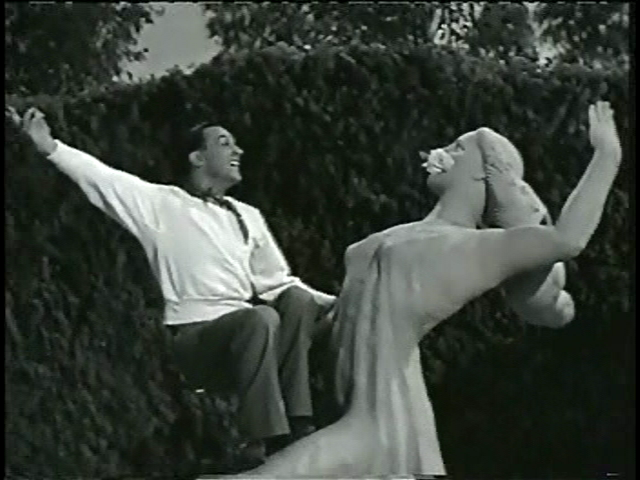
- Kelly’s “housebuilding dance”
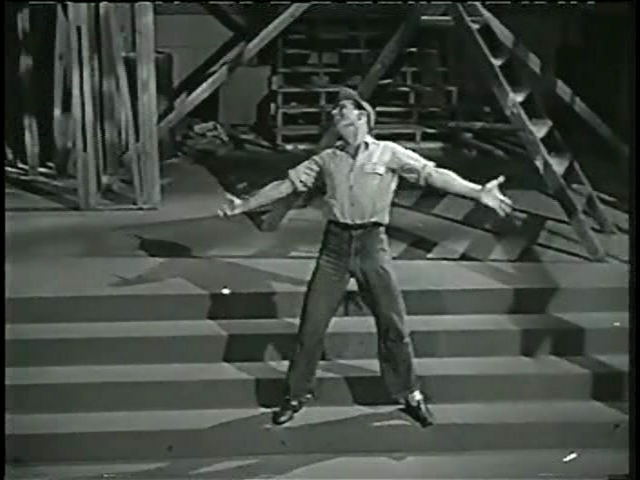
- A realistic glimpse of post-WWII reality for American G.I.s (here, Kelly and his buddy are scrounging to purchase even badly-fitting suits, given a shortage of available fabric)
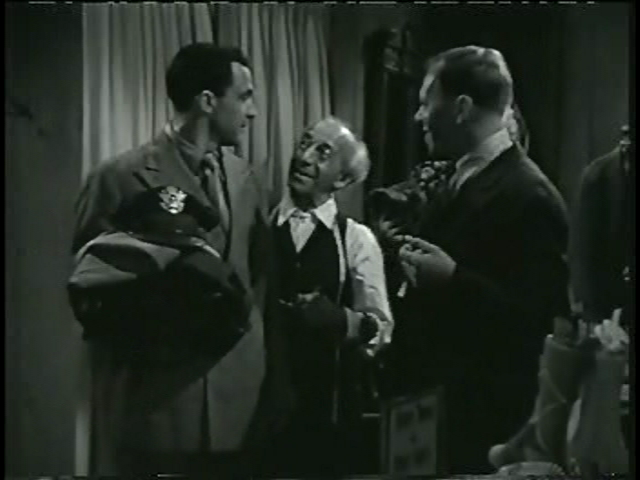
- Phyllis Thaxter as a war widow with a crush on Kelly (c.f. her similar “kind mother” role in 1964’s The World of Henry Orient)
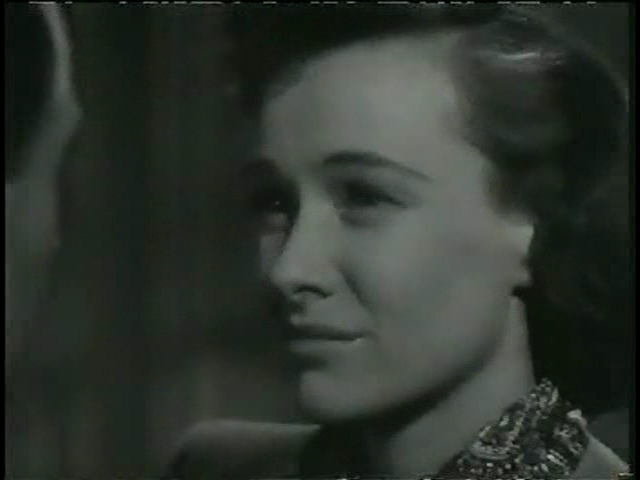
Must See?
No, but Gene Kelly fans will certainly be curious to check it out.
Links:
|
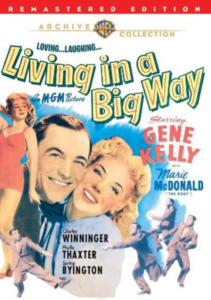




One thought on “Living in a Big Way (1947)”
In just about total agreement here: Kelly’s typically athletic dancing skills notwithstanding, this one’s a dud.
As comedy, there’s not a single funny joke. What co-writer La Cava missed almost completely in the writing department, he tries to compensate for in the directing chair. There he does succeed, to the extent that everything is paced well, even if it isn’t effervescent. But there we return to the script – what seems a very slight re-hash of ‘The Philadelphia Story’; another M-G-M film.
Immensely forgettable.